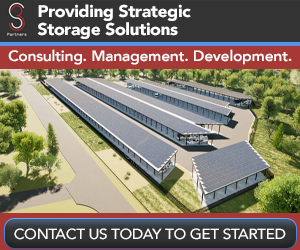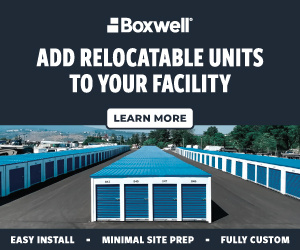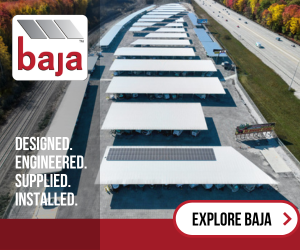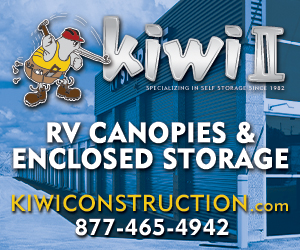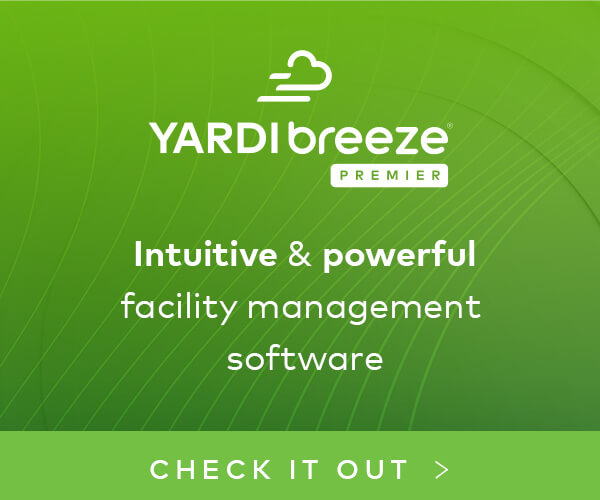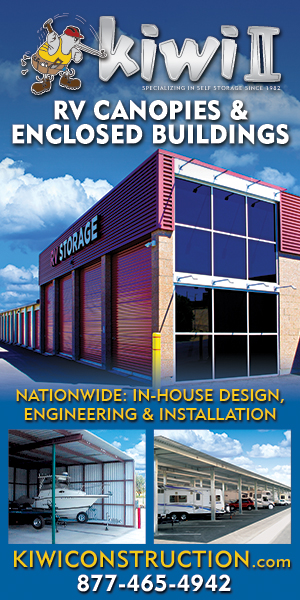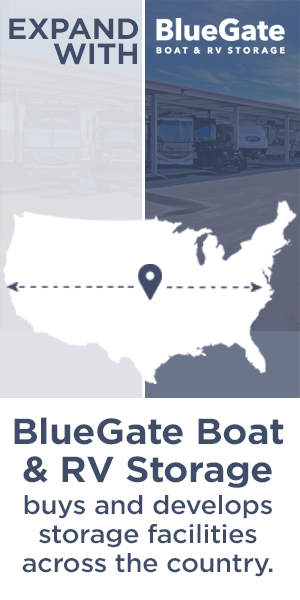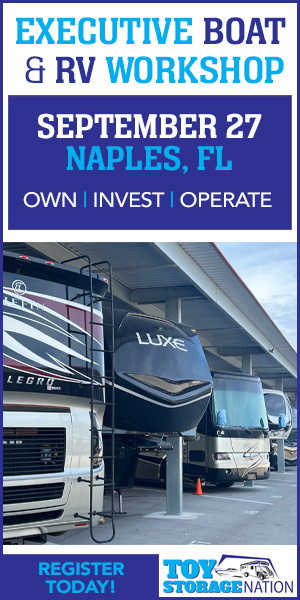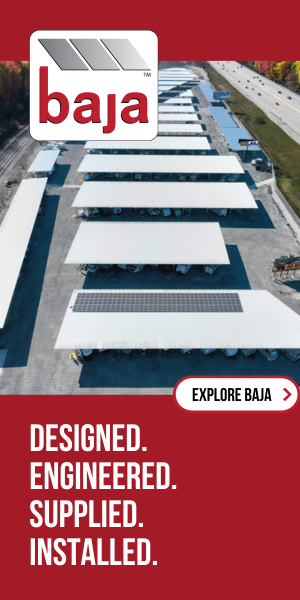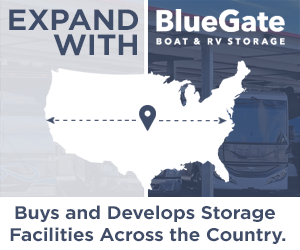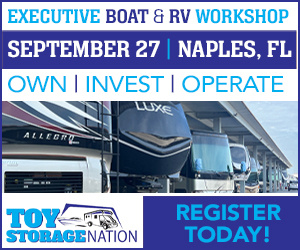By Storeganize
You’re probably looking to invest in a new business for profit but not sure where to start.
However, have you considered an RV storage facility?
Reports show that 11.2 million households currently own an RV in the US alone. With more and more folks buying RVs and needing a place to store them when not in use, the 
To ensure a profitable venture, it’s important to know how to start an RV storage business and implement a self-storage software for streamlined operations. In this guide, we’ll walk you through a 5-step guide to get your storage facility up and running. But first, let’s throw some light on the current state of the RV storage industry.
The Growing Demand for RV Storage
The RV industry has exploded in popularity over the past couple of decades. According to the RV Industry Association, RV ownership saw a 62% increase in the United States in the last two decades. As more people buy RVs, the demand for RV storage has equally skyrocketed.
RV storage facilities, also known as self-storage units, are secure areas where RV owners 
Here are some interesting statistics on the RV storage industry growth:
- RV and boat storage properties generated a revenue of $556.1 million in 2022, resulting in a 46.4% increase from the previous year.
- The average price per acre of RV and boat storage properties sold increased to $661,000 in 2022, representing a 53.6% annual increase.
These stats show that the RV storage industry is hot and primed for new entrepreneurs. Are you ready to tap into this resourceful market? Keep reading as we navigate the process of setting up an RV storage facility.
The Steps
Although the RV and boat storage industry is expanding, there is also increasing competition. To ensure you stand out, it’s important to conduct in-depth research into the market.
Here is how to start a boat storage business or RV storage facility in 5 steps:
- Choose the right location.
- Design and build a practical storage unit.
- Get the necessary equipment for your boat and RV storage business.
- Set competitive pricing for your storage units.
- Create a marketing plan for your outdoor storage business.
Step 1. Choose the Right Location
Selecting the right location is one of the most important decisions you’ll make when starting an RV storage business.
Here are some tips to consider:
Be practical.
Opt for a spot in a recreational area, if possible, near a beach, lake, or campground. While the land may cost more, the location will drive business. You don’t necessarily need to be right in a residential neighborhood — most RV owners care more about the practicality of getting to their vehicle than proximity to home. A recreational area, especially one that attracts RV travelers, is ideal.
Consider abandoned buildings.
Look into purchasing abandoned buildings or old workshops you can convert. Lands in areas with plenty of open areas for vehicle storage and easy road access will likely be very expensive. However, a dilapidated building in such areas will be more affordable since owners will likely want to dispose of them as soon as possible.
Conduct a feasibility study.
Once you find a promising location, determine if there are any competitors nearby and if the area can sustain your business. Understand what zoning is needed for an RV storage business by checking with local planning and zoning departments for applicable storage unit laws. Look into any permits required and the costs involved. Review future development plans for the location to make sure the area won’t be rezoned for residential or commercial use anytime soon.
With the right spot secured, you’ll be well on your way to opening a successful RV storage business. The next thing to focus on is building and designing your storage unit.
Step 2. Design and Build a Practical Storage Unit
As an RV storage business owner, you’ll want to make the most of your space. That means choosing a smart design and efficient construction for your storage units.
Here are some tips to help you during the design and building phase:
Use a pre-engineered solution. One innovative option is using a pre-engineered steel building system, like the Trachte™ Create-A-Space Conversion System. This allows you to convert an existing building, like an old warehouse or factory, into customised storage units. The steel panels and frames are versatile and re-configurable so that you can design the optimal layout for your space. You’ll have the flexibility to create different-sized units to suit customer needs.
Calculate the needed space before building. When crafting the design section of your boat and RV storage business plan, think about the types of RVs and vehicles you want to store. Larger spaces are needed for motorhomes, travel trailers, and 5th wheels. You’ll want wide doors and high ceilings to easily accommodate their size. Smaller units may be better for camper vans, boats on trailers, or utility trailers.
Also, consider extra space for storing owners’ other gear and valuables. Some may want additional mini-storage in their unit or as a separate rental. Offering a variety of options will appeal to more customers.
Consider security and convenience. For security, choose a site with good visibility and provide lighting, fencing, security cameras, coded entry gates, and individually alarmed units to enhance owners’ peace of mind. Make sure all structures meet your local building codes for this type of facility. (More on security in the next step).
Keep your design simple and open for convenience. Wide driveways allow easy access and maneuvering for customers. If possible, have multiple entrances and exits. Likewise, numbered spaces with clearly marked lanes will make navigation easy for renters.
By choosing a smart, efficient design, you’ll be able to maximise your available space, offer customers the storage solutions they need, and ensure a secure facility where RV and vehicle owners feel good about storing their valuable property. An inviting, well-organized storage unit is the foundation of a successful RV storage business.
Step 3. Get the Necessary Equipment for Your Boat and RV Storage Business
To operate a successful boat and RV storage business, you’ll need to invest in high-quality equipment designed for vehicle storage, including the following:
Perimeter fencing
There are high chances of storage facilities getting broken into. To prevent burglary, consider installing a sturdy fence around the perimeter of your storage facility will help deter thieves and prevent unauthorised access. Chain link fencing, metal fencing, or privacy slats are good options. Make sure any fencing is at least 6 to 8 feet high.
24-Hour security access
Providing customers with 24-hour access to their vehicles and on-site security are must-haves.
We recommend installing the following storage facility security solutions
- Key-coded entry gates for customers to access the facility. This allows them to come and go as needed while preventing unauthorised entry.
- Security cameras to monitor all areas of the facility, especially entrances and exits. Consider cameras that offer night vision and motion detection.
- Outdoor lighting, like LED floodlights, to illuminate the entire facility. This deters criminal behavior and allows your security cameras to capture details clearly.
- On-site security guards to patrol the facility, especially overnight. You can also hire third-party security companies to monitor the cameras and respond to any alarms.
Additional amenities Provide extras like tow straps, leveling blocks, air compressors, and vending machines on site. An on-site RV dump station and potable water fill-up are also useful amenities for customers.
Developing a fully fenced outdoor storage facility with high-end security equipment and amenities will typically cost more. However, the investment will give boat and RV owners peace of mind that their vehicles are well-protected, allowing you to charge premium rates.
Step 4. Set Competitive Pricing for Your Storage Units
One of the keys to starting an RV storage business that’s profitable is pricing your units competitively. In the US, the standard storage units can range from $60 to $180 per month, while climate-controlled units cost between $75 and $225 per month.
Pricing your RV storage units competitively means setting rental rates comparable to other facilities in your area. Do some research on local competitors to determine their pricing for similar-sized units — you want to price similarly; not too high or too low. If your rates are too high, you risk losing potential customers to cheaper options; similarly, pricing too low can hurt your profitability.
A good rule of thumb is to charge around the same as competitors for the most common-sized units, like 10×20 feet. Then, adjust from there for larger or smaller units. You may be able to charge slightly more for extra features like 24-hour access, security cameras, or climate control. But don’t price yourself out of the market.
Here are some other tips for setting competitive rates:
- Offer discounts and specials, especially after launching. This can help attract new customers.
- Consider bundling extra services or offering package deals. This adds value for customers without significantly reducing your rates.
- Increase prices gradually over time as your occupancy stabilizes. But keep an eye on what competitors are charging to ensure you remain in the same general price range.
- Price differently based on unit location and features. Corner units, drive-up units, and climate-controlled storage units are typically more desirable and can command a premium.
With the right pricing strategy, you’ll fill your RV storage facility with loyal, long-term customers. Be sure to also provide great customer service and security so people feel good about storing their RVs in your facility. Competitive pricing combined with a quality operation is the key to success.
Step 5. Create a Marketing Plan for Your Outdoor Storage Business
To attract customers to your new RV storage business, you’ll need an effective self storage marketing plan. In the US alone, the RV industry generates over $50 billion in economic impact each year, so there’s a huge opportunity if you can reach the right audience.
Here are some tips to consider when curating a marketing plan:
Run local campaigns. Focus on your location and online presence. Since RV owners travel frequently, billboards, social media ads, and an optimized Google My Business profile for better ranking in local search results are key.
Create educational content on your website about proper RV care and storage to establish your expertise. In addition, offer resources for finding campgrounds and parts, as well as road trip tips. By transforming your self-storage website into an informational hub for RV enthusiasts, you help get the word out about your RV and boat storage services.
Target RV owners. Market to existing RV owners in your area through targeted social media ads, Google Ads, and email campaigns. Reach out to local RV dealers, repair shops, and campgrounds to form partnerships. Ask if you can leave brochures, advertise on their website, or offer discounts and promotions to their customers. Build strong word-of-mouth marketing by providing excellent customer service–satisfied clients will spread the word about your business.
Attend recreational vehicle events. Attend RV shows and events to meet potential customers in person. Set up a booth to showcase your facility, hand out promotional items like keychains or bumper stickers, and collect email addresses. Sponsor RV clubs and organizations to raise brand awareness; some may allow you to include promotional materials in their newsletters or on their website.
Stay in touch with potential clients. Leverage email marketing to stay in touch with clients and keep your business at the top of their minds. Send monthly newsletters with storage tips, event announcements, seasonal reminders, and special offers. Make it easy for people to share your newsletters and website content with friends who own RVs by integrating social sharing buttons.
A strong, multi-channel marketing campaign focused on the RV community will drive traffic to your new self-storage business. With time and dedication, you’ll build a base of loyal customers through high-quality service and resources.
You now know how to start an RV park business and are set up for success. However, management is just as important as planning; therefore, we’ll offer strategies on how to manage your boat and RV storage business in the next section.
Managing Your Boat and RV Storage Business
Once your RV storage business is up and running, staying on top of day-to-day operations and managing growth is key.
Outlined below are important things to keep in mind:
1. Maintaining your units
Inspect your storage units regularly, adhering to a self storage maintenance checklist, and make any necessary repairs quickly. Check that doors and locks are working properly, and look for any leaks or damage. It’s also a good idea to routinely clean and sweep units when customers vacate them. Keeping your units in good shape will minimise hassles and keep customers happy.
2. Customer service
Provide great customer service to keep people coming back and referring others. Be available to answer questions, address concerns, and handle payments. Offer additional amenities like waste disposal, propane filling, and RV wash stations. Little perks that cater to RV owners will make you stand out.
3. Managing growth
As your business expands, daily tasks can become overwhelming without good systems in place. Use RV storage software to handle rentals, payments, and unit assignments efficiently. Hire additional staff to assist with janitorial work, customer service, and maintenance as needed. Also, consider investing in security cameras, gate access systems, and on-site managers for larger facilities.
With proper management and marketing techniques, a boat and RV storage business can be a rewarding venture.
Conclusion
If you’re thinking of how to start an RV storage business, we hope our guide simplifies the process for you. Sure, it’ll take some grit and elbow grease to get up and running, but if RVing is your passion, this could be a great way to turn that into a thriving business.
Keep your vision clear, prepare for challenges along the way, and lean on your community for support. With smart planning and perseverance, you’ll be filling out those storage units in no time. Don’t forget to implement a self-storage software to streamline operations and cut unnecessary staffing costs in your boat and RV storage business.
Storeganise is a comprehensive yet intuitive software solution powering valet and self storage businesses of all sizes all over the world.











